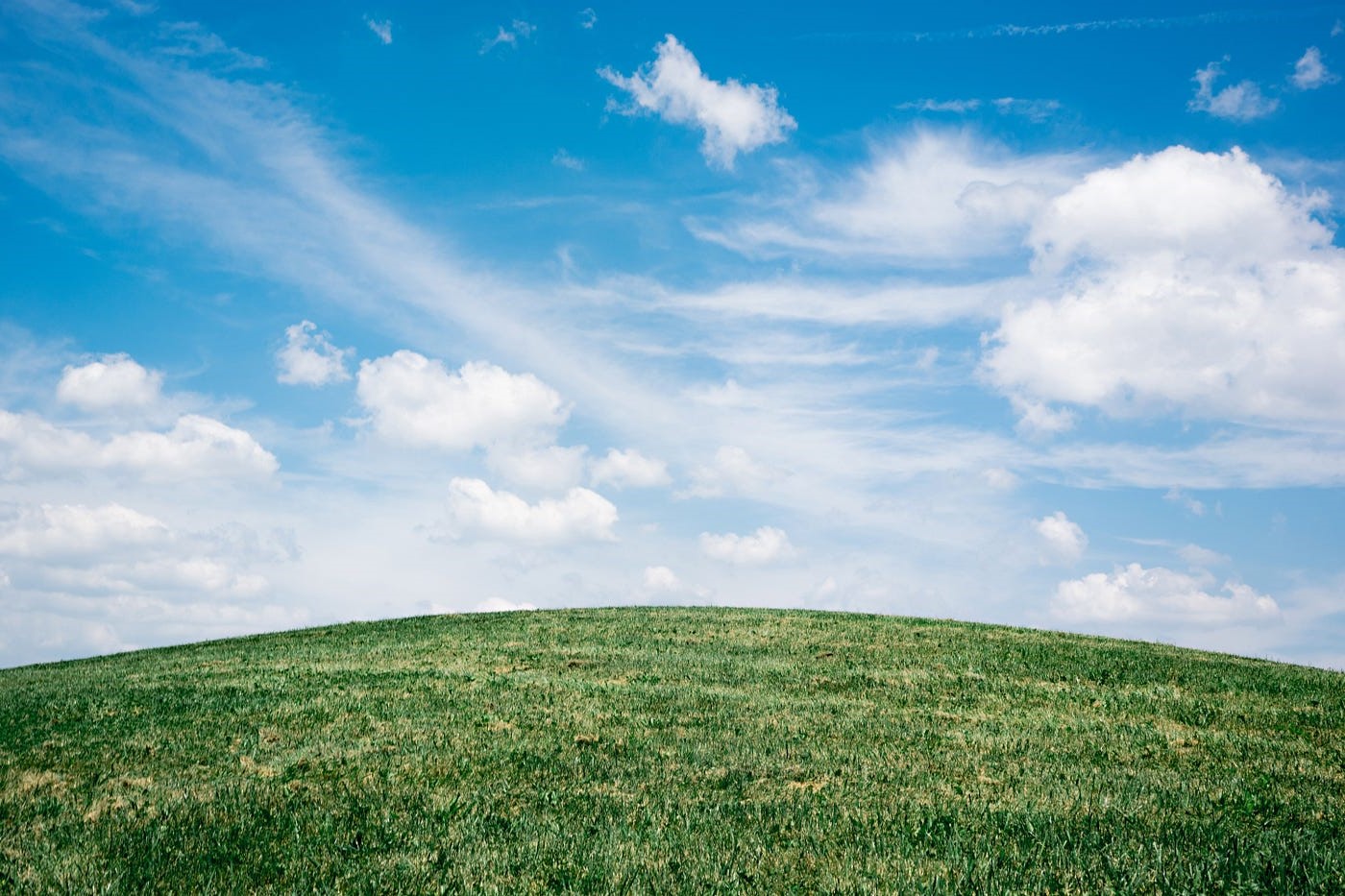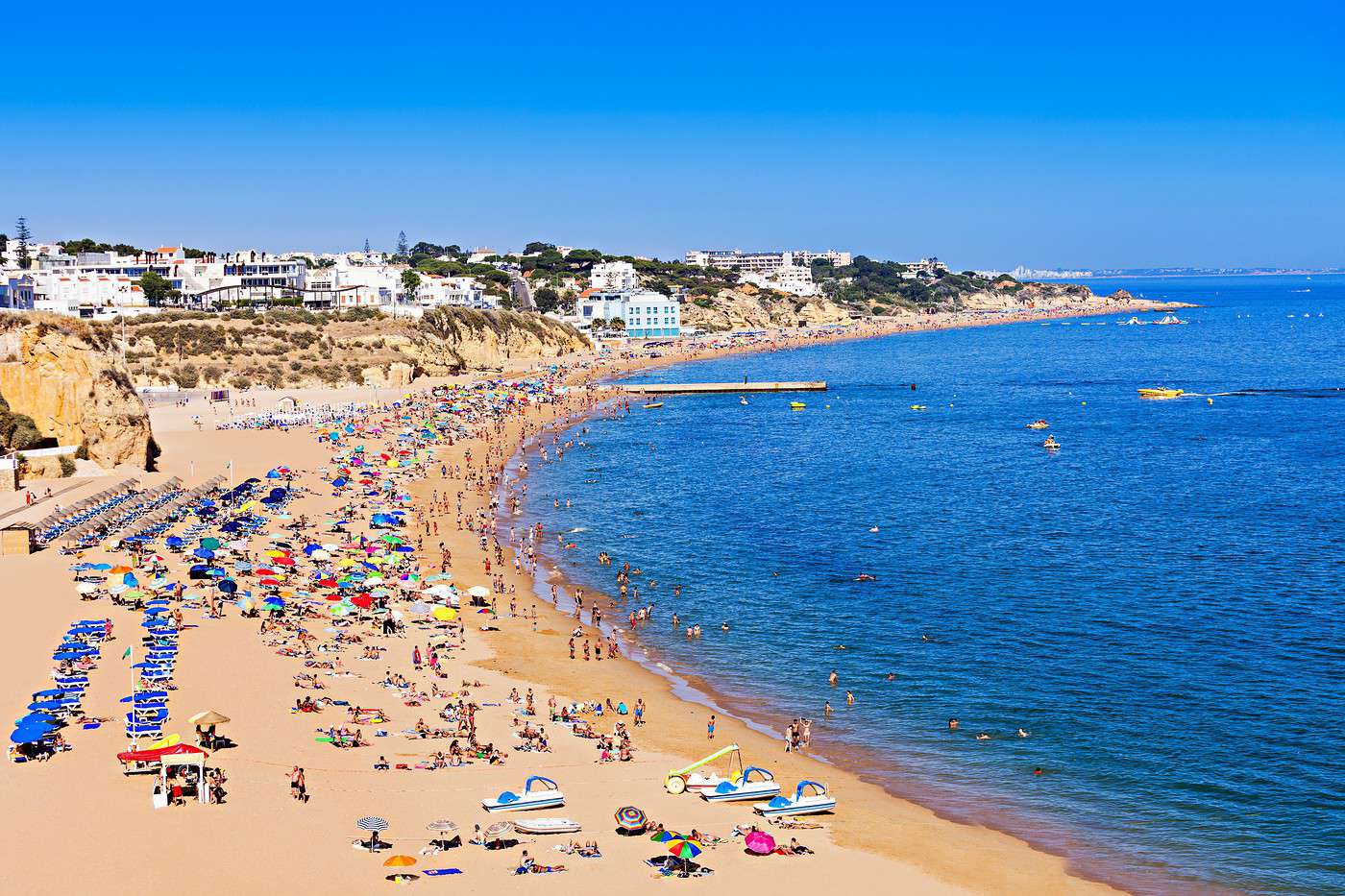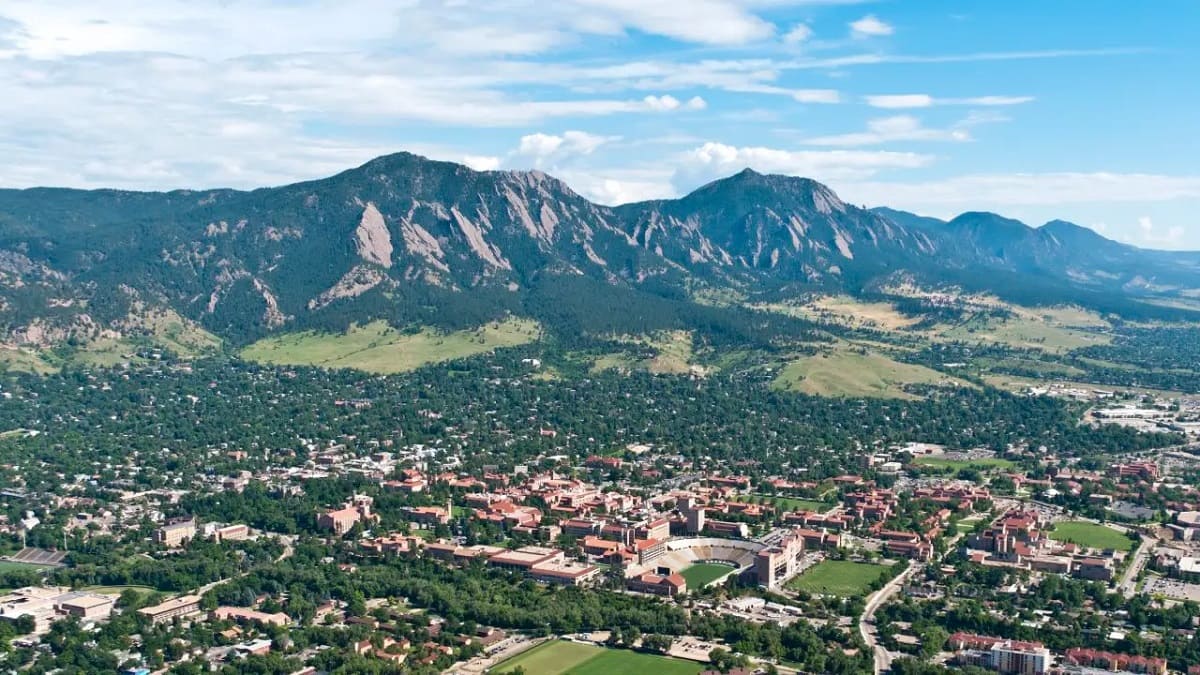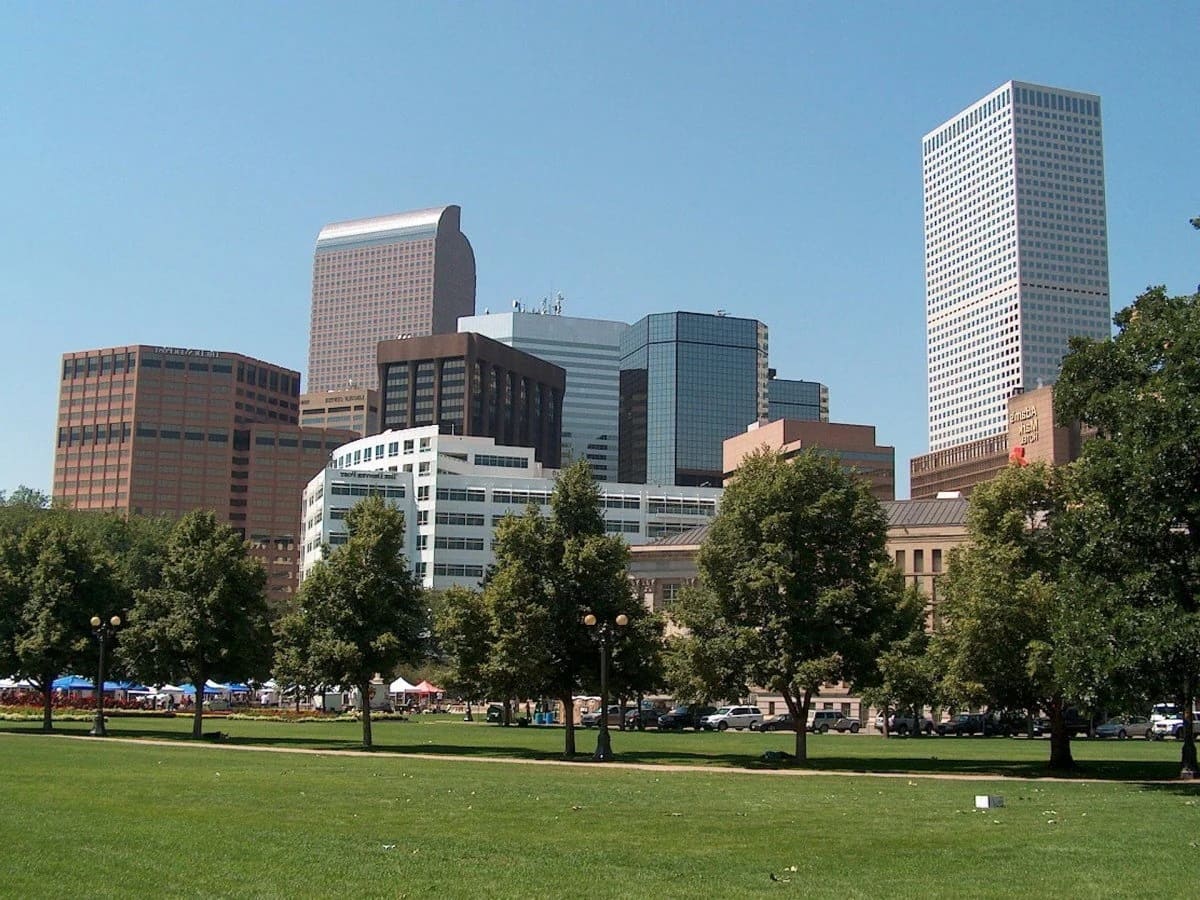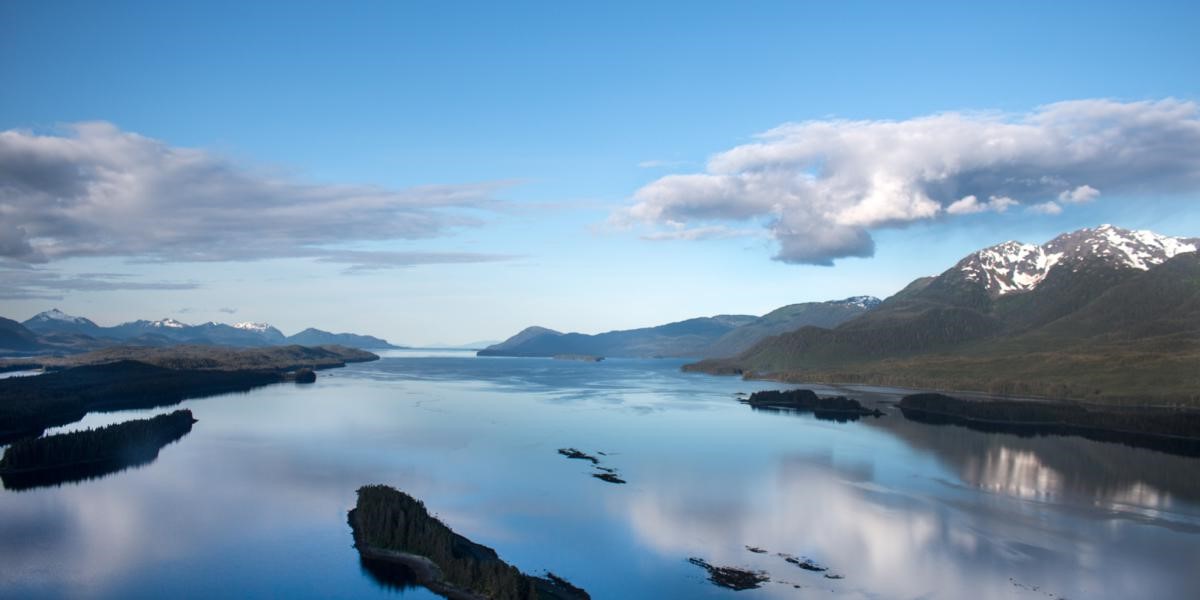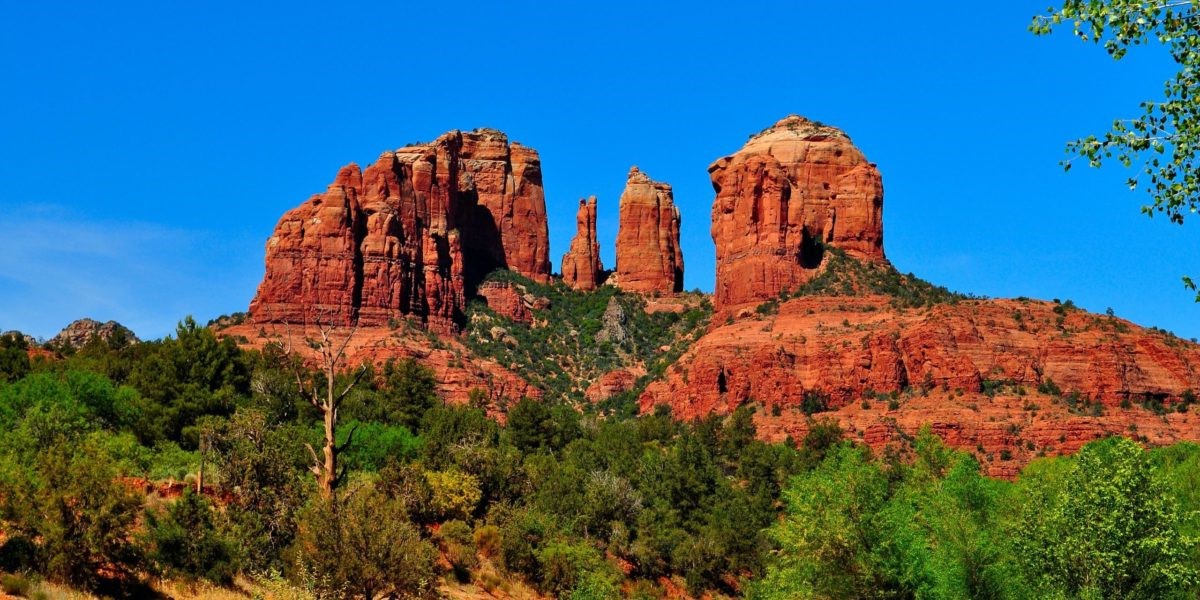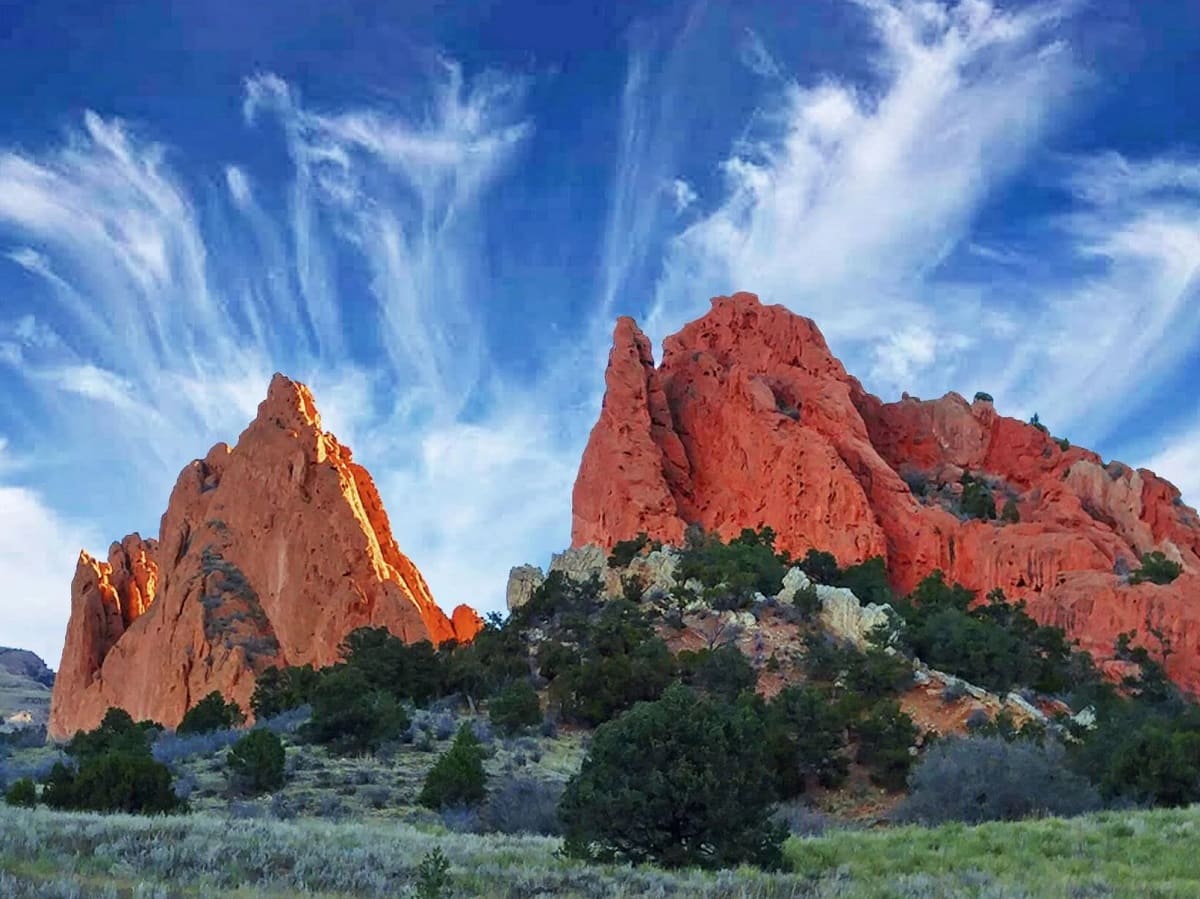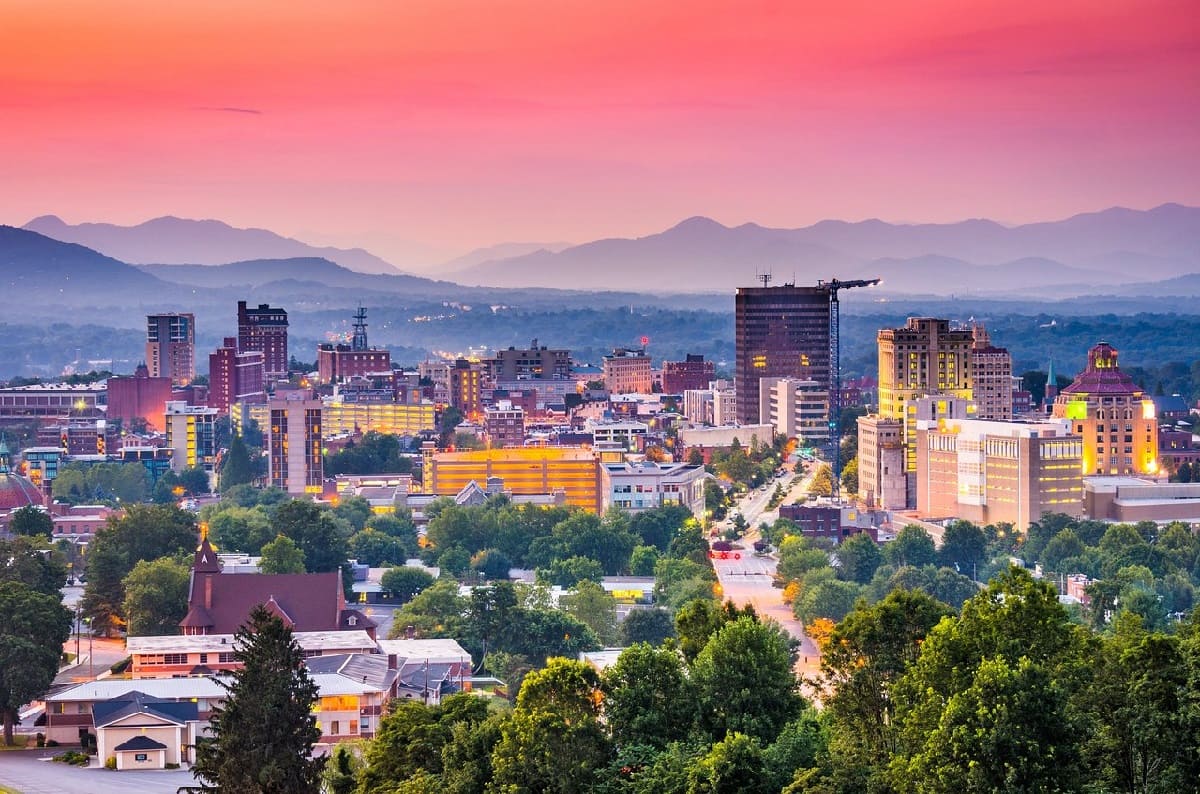Home>Weather and Climate>Yuma Arizona Weather: A Comprehensive Guide To Year-Round Climate
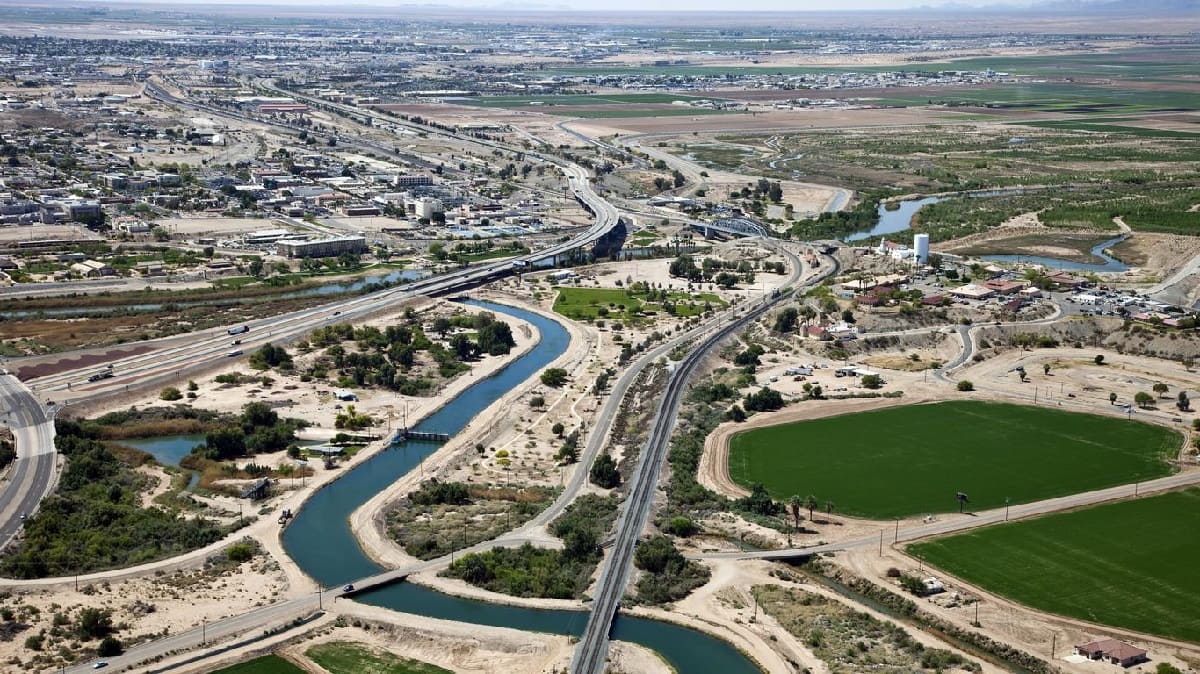

Weather and Climate
Yuma Arizona Weather: A Comprehensive Guide To Year-Round Climate
Published: April 8, 2024
Discover the diverse climate of Yuma, Arizona with our comprehensive guide. Explore year-round weather patterns and plan your visit with confidence.
(Many of the links in this article redirect to a specific reviewed product. Your purchase of these products through affiliate links helps to generate commission for Temperatures.com, at no extra cost. Learn more)
Table of Contents
Introduction
Welcome to the vibrant city of Yuma, Arizona, where the weather is as diverse as the community itself. Nestled in the southwestern corner of the state, Yuma boasts a climate that is truly one of a kind. From scorching summers to mild winters, Yuma's weather patterns are a fascinating blend of extremes and subtleties, making it a captivating destination for weather enthusiasts and casual visitors alike.
In this comprehensive guide, we will delve into the intricacies of Yuma's climate, exploring its unique weather patterns, seasonal variations, and the impact of these conditions on daily life. Whether you're a local resident or a curious traveler, understanding Yuma's weather is essential for making the most of your time in this dynamic city.
Throughout this guide, we will uncover the nuances of Yuma's climate, shedding light on the factors that contribute to its distinctive weather patterns. From the relentless heat of summer to the refreshing coolness of winter, Yuma's climate presents a fascinating tapestry of meteorological phenomena that shape the city's identity and lifestyle.
Join us as we embark on a journey through the ever-changing skies of Yuma, gaining insights into the weather that defines this remarkable city. Whether you're seeking practical tips for dressing for Yuma's climate or eager to explore the array of outdoor activities available regardless of the weather, this guide will equip you with the knowledge and understanding to fully appreciate Yuma's year-round climate.
Understanding Yuma's Unique Climate
Yuma, Arizona, is renowned for its distinctive climate, characterized by its arid desert landscape and extreme temperatures. Situated in the Sonoran Desert, Yuma experiences a desert climate, marked by exceptionally hot summers and mild winters. This unique climatic setting is influenced by several factors, including its proximity to the Gulf of California, the surrounding mountain ranges, and the prevalence of high-pressure systems.
The city's location near the Gulf of California plays a pivotal role in shaping its climate. During the summer months, warm air masses originating from the Gulf of California sweep across the region, bringing intense heat and aridity. This influx of warm, dry air contributes to Yuma's scorching summer temperatures, often exceeding 100 degrees Fahrenheit. In contrast, the winter months see a milder climate, with cooler air prevailing due to the influence of the nearby oceanic body.
Yuma's weather is further influenced by the surrounding mountain ranges, including the Gila and Chocolate Mountains. These geographical features impact the city's climate by creating distinct temperature differentials and influencing local wind patterns. Additionally, the mountains contribute to the region's relatively low humidity levels, a defining characteristic of desert climates.
High-pressure systems also play a significant role in Yuma's weather patterns. The prevalence of high-pressure areas over the southwestern United States results in clear skies and minimal precipitation, contributing to the city's arid climate. This atmospheric pressure dynamic, combined with the region's topography, fosters the hot, dry conditions that define Yuma's weather for much of the year.
Yuma's unique climate presents both challenges and opportunities for its residents and visitors. While the summer heat can be intense, the city's mild winters offer a welcome respite from the scorching temperatures. Understanding the intricacies of Yuma's climate is essential for navigating its weather patterns and making informed decisions regarding outdoor activities, travel plans, and overall comfort.
By gaining insight into the factors that shape Yuma's climate, individuals can better appreciate the city's meteorological diversity and adapt to its ever-changing weather conditions. Whether embracing the warmth of summer or savoring the pleasant winter months, Yuma's unique climate invites exploration and appreciation, showcasing the remarkable adaptability of both nature and human life in this desert oasis.
Yuma Weather Patterns
Yuma's weather patterns are characterized by distinct seasonal variations and meteorological phenomena that shape the city's climate throughout the year. The city's location in the Sonoran Desert, coupled with its proximity to the Gulf of California and surrounding mountain ranges, contributes to the unique weather patterns that define Yuma's meteorological landscape.
Summer Weather
During the summer months, Yuma experiences exceptionally hot and arid conditions. The city is known for its scorching summer temperatures, with average highs exceeding 100 degrees Fahrenheit. The relentless heat is attributed to the influence of warm air masses originating from the Gulf of California, which sweep across the region, bringing intense heat and minimal precipitation. The combination of high temperatures and low humidity levels creates an environment characteristic of desert climates, where residents and visitors alike must take precautions to stay cool and hydrated.
Monsoon Season
Yuma's weather patterns undergo a notable shift during the monsoon season, typically occurring from July to September. This period is marked by an increase in atmospheric moisture, leading to the development of thunderstorms and localized heavy rainfall. The arrival of the monsoon brings a temporary reprieve from the intense heat, as the region experiences dramatic cloud formations, thunder, and lightning. While the monsoon season introduces variability to Yuma's weather, it also poses challenges such as flash floods and strong winds, necessitating vigilance and preparedness among residents.
Read more: Tennessee Weather: A Year-Round Overview
Winter Weather
In contrast to the sweltering summer, Yuma's winter weather offers a welcome respite from the extreme heat. The city experiences mild and pleasant winters, with average daytime temperatures ranging from the 60s to the 70s Fahrenheit. The cooler air prevailing during this season is influenced by the proximity to the Gulf of California, contributing to the city's relatively mild winter climate. The clear skies and comfortable temperatures make winter an ideal time for outdoor activities and leisure pursuits in Yuma.
Transitional Seasons
Yuma's transitional seasons, spring and fall, exhibit moderate temperatures and gradual shifts in weather patterns. Spring brings the gradual warming of the environment, accompanied by the blossoming of desert flora and the emergence of vibrant wildflowers. Fall, on the other hand, heralds a gentle cooling of temperatures and the onset of harvest season, showcasing the agricultural richness of the region.
Understanding Yuma's weather patterns is essential for residents and visitors alike, enabling them to prepare for the diverse climatic conditions that define the city's year-round climate. Whether navigating the intense heat of summer, embracing the atmospheric drama of the monsoon season, or savoring the mild winters, Yuma's weather patterns offer a captivating tapestry of meteorological experiences, reflecting the dynamic nature of the desert environment.
Yuma Weather by Season
Summer Weather
Yuma's summer weather is characterized by relentless heat and arid conditions. From June to August, the city experiences scorching temperatures, with average highs exceeding 100 degrees Fahrenheit. The intense heat is attributed to the influence of warm air masses originating from the Gulf of California, sweeping across the region and bringing minimal precipitation. The combination of high temperatures and low humidity levels creates an environment typical of desert climates, necessitating precautions to combat the heat. Residents and visitors are advised to stay hydrated, seek shade, and limit outdoor activities during the peak of the day to avoid heat-related illnesses.
Monsoon Season
Yuma's weather undergoes a notable shift during the monsoon season, typically occurring from July to September. This period is marked by an increase in atmospheric moisture, leading to the development of thunderstorms and localized heavy rainfall. The arrival of the monsoon brings a temporary reprieve from the intense heat, as the region experiences dramatic cloud formations, thunder, and lightning. While the monsoon season introduces variability to Yuma's weather, it also poses challenges such as flash floods and strong winds, necessitating vigilance and preparedness among residents. The monsoon season adds a dynamic element to Yuma's climate, showcasing the dramatic interplay of atmospheric forces and the resilience of the desert ecosystem.
Read more: Tennessee Weather: A Year-Round Overview
Winter Weather
In contrast to the sweltering summer, Yuma's winter weather offers a welcome respite from the extreme heat. From December to February, the city experiences mild and pleasant winters, with average daytime temperatures ranging from the 60s to the 70s Fahrenheit. The cooler air prevailing during this season is influenced by the proximity to the Gulf of California, contributing to the city's relatively mild winter climate. The clear skies and comfortable temperatures make winter an ideal time for outdoor activities and leisure pursuits in Yuma. Residents and visitors can take advantage of the pleasant weather to explore the city's outdoor attractions, engage in recreational activities, and savor the natural beauty of the desert landscape.
Transitional Seasons
Yuma's transitional seasons, spring and fall, exhibit moderate temperatures and gradual shifts in weather patterns. Spring brings the gradual warming of the environment, accompanied by the blossoming of desert flora and the emergence of vibrant wildflowers. The city's surroundings come alive with color and vitality, offering opportunities for nature enthusiasts to witness the desert's seasonal transformation. Fall, on the other hand, heralds a gentle cooling of temperatures and the onset of harvest season, showcasing the agricultural richness of the region. The transitional seasons provide a balanced climate, allowing residents and visitors to engage in a variety of outdoor pursuits and cultural experiences amidst the changing backdrop of Yuma's natural environment.
Understanding Yuma's weather by season is essential for residents and visitors to adapt to the diverse climatic conditions that define the city's year-round climate. Whether navigating the intense heat of summer, embracing the atmospheric drama of the monsoon season, or savoring the mild winters and transitional seasons, Yuma's weather offers a captivating tapestry of meteorological experiences, reflecting the dynamic nature of the desert environment.
How Yuma's Weather Affects Daily Life
Yuma's weather exerts a profound influence on the daily lives of its residents and the experiences of visitors, shaping a unique rhythm that reflects the city's climatic diversity. The impact of Yuma's weather extends beyond mere meteorological conditions, permeating various facets of daily life and fostering a distinct cultural and lifestyle dynamic.
During the scorching summer months, Yuma's residents adapt their routines to mitigate the effects of the intense heat. Outdoor activities are often scheduled during the cooler morning and evening hours, while the midday period sees a slowdown in outdoor pursuits due to the extreme temperatures. Residents prioritize hydration and seek refuge in air-conditioned spaces to escape the relentless heat, emphasizing the importance of staying cool and safe amid the summer climate.
The arrival of the monsoon season introduces a sense of anticipation and preparedness among Yuma's residents. The potential for sudden thunderstorms and heavy rainfall prompts individuals to remain vigilant and monitor weather forecasts, especially in areas prone to flash floods. The dramatic atmospheric changes during the monsoon season evoke a heightened awareness of weather dynamics, fostering a sense of resilience and adaptability within the community.
In contrast, the mild winters offer a welcome opportunity for outdoor engagement and social gatherings. Residents and visitors alike take advantage of the comfortable temperatures to explore the city's outdoor attractions, participate in community events, and enjoy al fresco dining experiences. The winter climate encourages a vibrant outdoor lifestyle, characterized by a sense of conviviality and appreciation for the pleasant weather conditions.
Yuma's weather also influences the city's agricultural practices and economic activities. The region's rich agricultural heritage is intricately linked to the climate, with the winter months providing an ideal environment for crop cultivation. The seasonal variations in weather dictate planting and harvesting schedules, shaping the rhythm of agricultural life and contributing to the region's economic vitality.
Furthermore, Yuma's weather plays a pivotal role in shaping the city's cultural events and recreational pursuits. From outdoor festivals and markets to recreational sports and nature-based activities, the weather acts as a guiding force, influencing the timing and nature of community gatherings and leisure experiences.
Overall, Yuma's weather profoundly impacts daily life, shaping routines, fostering resilience, and influencing the city's cultural and economic dynamics. By embracing the nuances of Yuma's climate, residents and visitors alike cultivate an appreciation for the interplay between weather and daily life, enriching their experiences and fostering a deep connection to the city's meteorological tapestry.
Tips for Dressing for Yuma Weather
Dressing appropriately for Yuma's diverse climate is essential for staying comfortable and safe while navigating the city's weather patterns. Whether facing the intense heat of summer, the atmospheric drama of the monsoon season, or the mild winters and transitional seasons, strategic wardrobe choices can enhance the overall experience of Yuma's year-round climate.
Summer Attire
During the scorching summer months, lightweight and breathable clothing is paramount for staying cool and comfortable. Opt for loose-fitting, light-colored garments that allow air circulation and minimize heat retention. Fabrics such as cotton and linen are ideal choices, as they wick away moisture and promote ventilation. Additionally, wide-brimmed hats, sunglasses, and sunscreen are essential for protecting the skin from the intense sun, while closed-toe shoes provide stability and protection during outdoor activities.
Monsoon Season Precautions
As Yuma experiences the monsoon season, it's important to be prepared for sudden changes in weather. Keep a lightweight, water-resistant jacket or poncho handy to shield against unexpected rain showers. Quick-drying footwear and moisture-wicking socks are valuable additions to your wardrobe during this period, ensuring comfort and protection in case of wet conditions. Additionally, carrying a compact umbrella can offer respite from both rain and intense sunlight, providing versatile protection against the elements.
Winter Comfort
In the mild winters of Yuma, layering becomes a key strategy for adapting to fluctuating temperatures throughout the day. Start with a lightweight base layer, such as a long-sleeved shirt or thermal top, and add a sweater or jacket for insulation during cooler mornings and evenings. As the day progresses and temperatures rise, the ability to remove layers ensures comfort and adaptability. Pairing this with comfortable, closed-toe shoes and a versatile scarf or shawl provides additional warmth and style, allowing you to seamlessly transition between indoor and outdoor environments.
Transitional Seasons Versatility
During the transitional seasons of spring and fall, versatility is key when selecting attire. Embrace the moderate temperatures by incorporating a mix of short-sleeved and long-sleeved options, along with adaptable outerwear for variable weather conditions. Lightweight, multi-purpose accessories, such as a wide scarf or a lightweight jacket, offer flexibility in responding to the changing climate. Footwear that balances breathability with protection, such as breathable sneakers or comfortable boots, ensures readiness for diverse outdoor activities.
By tailoring your wardrobe to the nuances of Yuma's weather, you can optimize your comfort and enjoyment of the city's diverse climate. Strategic clothing choices, combined with essential accessories and adaptable layers, empower you to embrace the dynamic weather patterns of Yuma while maintaining a sense of style and practicality. Whether exploring the city's outdoor attractions, attending cultural events, or simply savoring the natural beauty of the desert landscape, dressing for Yuma's weather enhances your overall experience and ensures a seamless transition between the city's diverse meteorological tapestry.
Outdoor Activities in Yuma, Regardless of Weather
Yuma, Arizona, offers a wealth of outdoor activities that cater to diverse interests and preferences, ensuring an engaging and dynamic experience regardless of the prevailing weather conditions. From exhilarating adventures to leisurely pursuits, the city's natural beauty and cultural offerings provide an array of options for residents and visitors to explore and enjoy throughout the year.
Desert Exploration
Yuma's unique desert landscape beckons adventurers to embark on explorations that showcase the region's rugged beauty and ecological diversity. Regardless of the weather, guided desert tours offer an immersive experience, allowing participants to discover the desert's flora, fauna, and geological formations. Whether navigating the arid terrain on foot, by off-road vehicle, or on a guided nature walk, the desert presents a captivating tapestry of natural wonders waiting to be uncovered.
Riverfront Recreation
The picturesque Colorado River, a central feature of Yuma's landscape, provides an idyllic setting for a variety of outdoor activities. Boating, kayaking, and paddleboarding enthusiasts can take advantage of the river's tranquil waters, creating memorable experiences against the backdrop of stunning desert vistas. Additionally, riverfront parks and pathways offer opportunities for leisurely strolls, picnics, and birdwatching, inviting individuals to immerse themselves in the serene beauty of the riverfront regardless of the weather.
Cultural and Historical Excursions
Yuma's rich cultural heritage and historical significance are showcased through a myriad of outdoor attractions that offer engaging experiences regardless of weather conditions. The Yuma Territorial Prison State Historic Park provides a captivating journey into the city's past, allowing visitors to explore the prison's grounds and learn about its intriguing history. Similarly, the Yuma Crossing National Heritage Area features outdoor exhibits, walking trails, and interpretive sites that offer immersive insights into the region's cultural and historical legacy, making it an enriching destination for outdoor exploration.
Outdoor Events and Festivals
Yuma's vibrant community spirit comes alive through a diverse array of outdoor events and festivals that celebrate the city's culture, arts, and culinary delights. From outdoor concerts and art fairs to food festivals and cultural celebrations, the city's event calendar is brimming with opportunities for outdoor enjoyment, regardless of the weather. Whether basking in the sunshine during a lively outdoor concert or savoring culinary delights at an open-air festival, Yuma's outdoor events offer engaging experiences that cater to a wide range of interests.
Recreational Sports and Activities
Yuma's favorable climate, particularly during the winter months, provides an ideal environment for a variety of recreational sports and outdoor activities. Golf enthusiasts can tee off at the city's renowned golf courses, while hikers and cyclists can explore scenic trails that showcase the natural beauty of the desert landscape. Additionally, the city's parks and recreational facilities offer opportunities for outdoor sports, fitness activities, and family-friendly gatherings, ensuring that individuals of all ages can engage in active pursuits regardless of the weather.
Yuma's diverse array of outdoor activities transcends the constraints of weather, offering engaging experiences that cater to a wide spectrum of interests and preferences. Whether immersing oneself in the desert's natural wonders, exploring the city's cultural and historical attractions, or participating in recreational pursuits, Yuma's outdoor offerings provide a dynamic tapestry of experiences that invite individuals to embrace the city's natural and cultural heritage throughout the year.
Conclusion
In conclusion, Yuma, Arizona's year-round climate presents a captivating tapestry of meteorological diversity, reflecting the city's unique identity and offering a wealth of experiences for residents and visitors alike. From the scorching heat of summer to the atmospheric drama of the monsoon season and the mild winters and transitional seasons, Yuma's weather patterns shape the city's cultural, recreational, and economic dynamics, fostering a deep connection between climate and daily life.
The understanding of Yuma's climate is essential for navigating its diverse weather patterns and making informed decisions regarding outdoor activities, travel plans, and overall comfort. By delving into the factors that contribute to Yuma's distinctive climate, individuals can gain a deeper appreciation for the city's meteorological tapestry and adapt to its ever-changing weather conditions.
The impact of Yuma's weather extends beyond mere meteorological conditions, permeating various facets of daily life and fostering a distinct cultural and lifestyle dynamic. Residents and visitors alike adapt their routines to mitigate the effects of the intense heat during summer, remain vigilant and prepared during the monsoon season, and embrace the opportunities for outdoor engagement and social gatherings in the mild winters. The city's agricultural practices, economic activities, cultural events, and recreational pursuits are all influenced by the nuances of Yuma's climate, showcasing the profound impact of weather on the city's diverse tapestry of experiences.
Furthermore, dressing appropriately for Yuma's diverse climate is essential for staying comfortable and safe while navigating the city's weather patterns. Strategic wardrobe choices can enhance the overall experience of Yuma's year-round climate, ensuring that individuals can optimize their comfort and enjoyment regardless of the prevailing weather conditions.
Yuma, Arizona, offers a wealth of outdoor activities that cater to diverse interests and preferences, ensuring an engaging and dynamic experience regardless of the prevailing weather conditions. The city's natural beauty and cultural offerings provide an array of options for residents and visitors to explore and enjoy throughout the year, transcending the constraints of weather and offering engaging experiences that cater to a wide spectrum of interests and preferences.
In essence, Yuma's year-round climate invites exploration, appreciation, and adaptation, showcasing the remarkable adaptability of both nature and human life in this desert oasis. By embracing the nuances of Yuma's climate, individuals can cultivate a deep connection to the city's meteorological tapestry, enriching their experiences and fostering a profound appreciation for the interplay between weather and daily life in this vibrant desert community.

